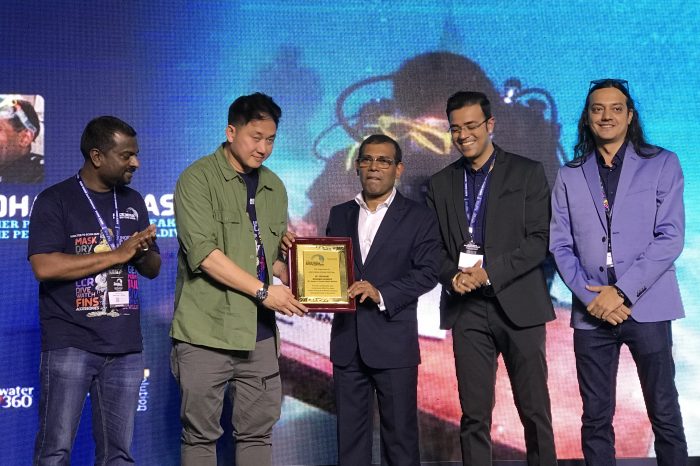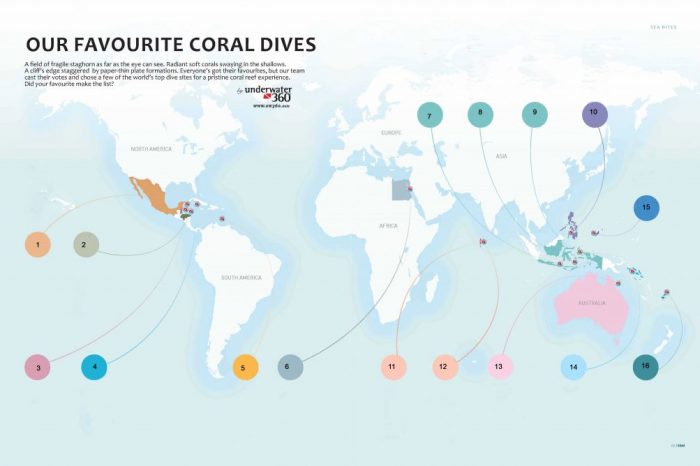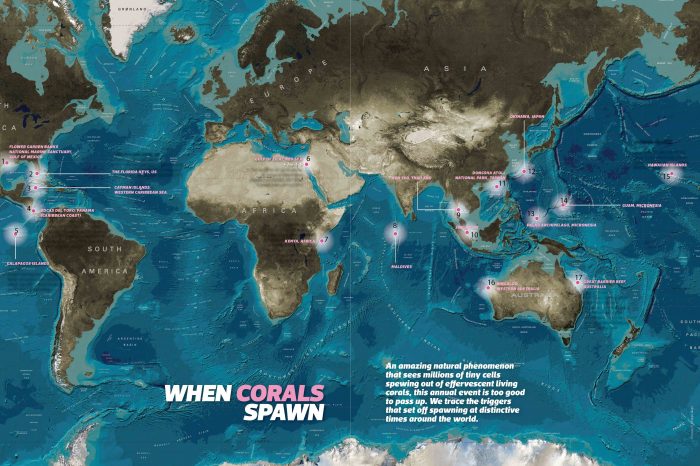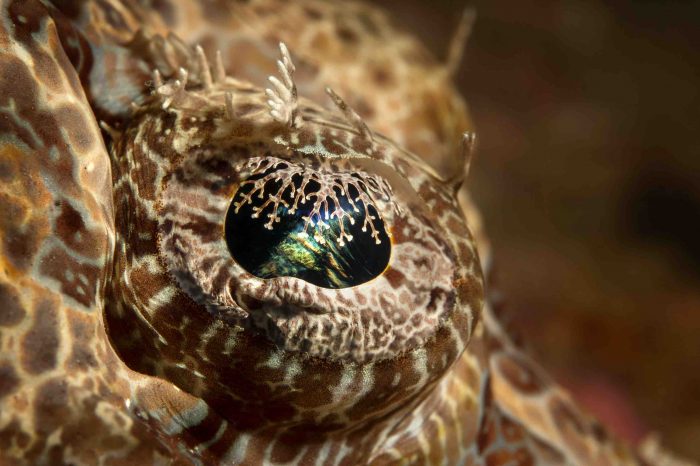Lap of Luxury
One of the ultimate indulgent dive destinations, the Maldives promises photographic riches beyond your wildest imagination
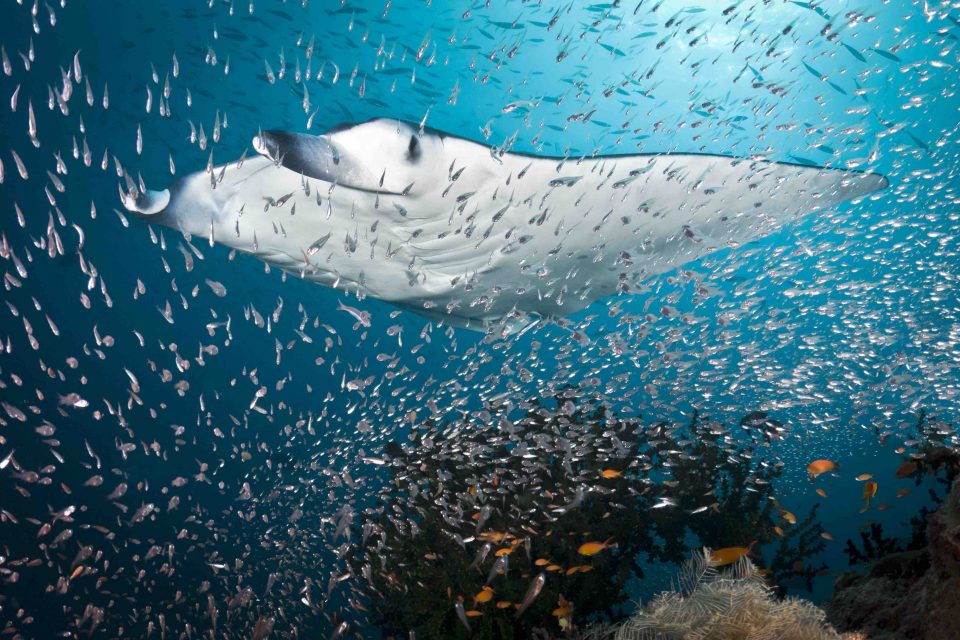
Text and Images by Erin Quigley
Situated southwest of India and Sri Lanka in the Laccadive Sea, the Maldives is comprised of 26 natural atolls that envelop almost 1,200 islands. Ninety-nine percent of the nation is covered with water, and what little land there is barely breaks the surface, averaging an elevation of only three feet above sea level. As such, this one-of-a-kind archipelago is a mecca for underwater photographers dreaming of dramatic manta aggregations, abundant fish life, and vivid soft-coral seascapes.
Diving in MALDIVES
The two most common types of dive sites in the Maldives are channels (kandu) and pinnacles (thilas). Because of the unique topography, currents sweep from the outer reefs of the atolls (dhuni) through channels and passages, carrying with them the nutrients that support the vast numbers of fish and dense assortment of sponges and soft corals that decorate almost every dive site.
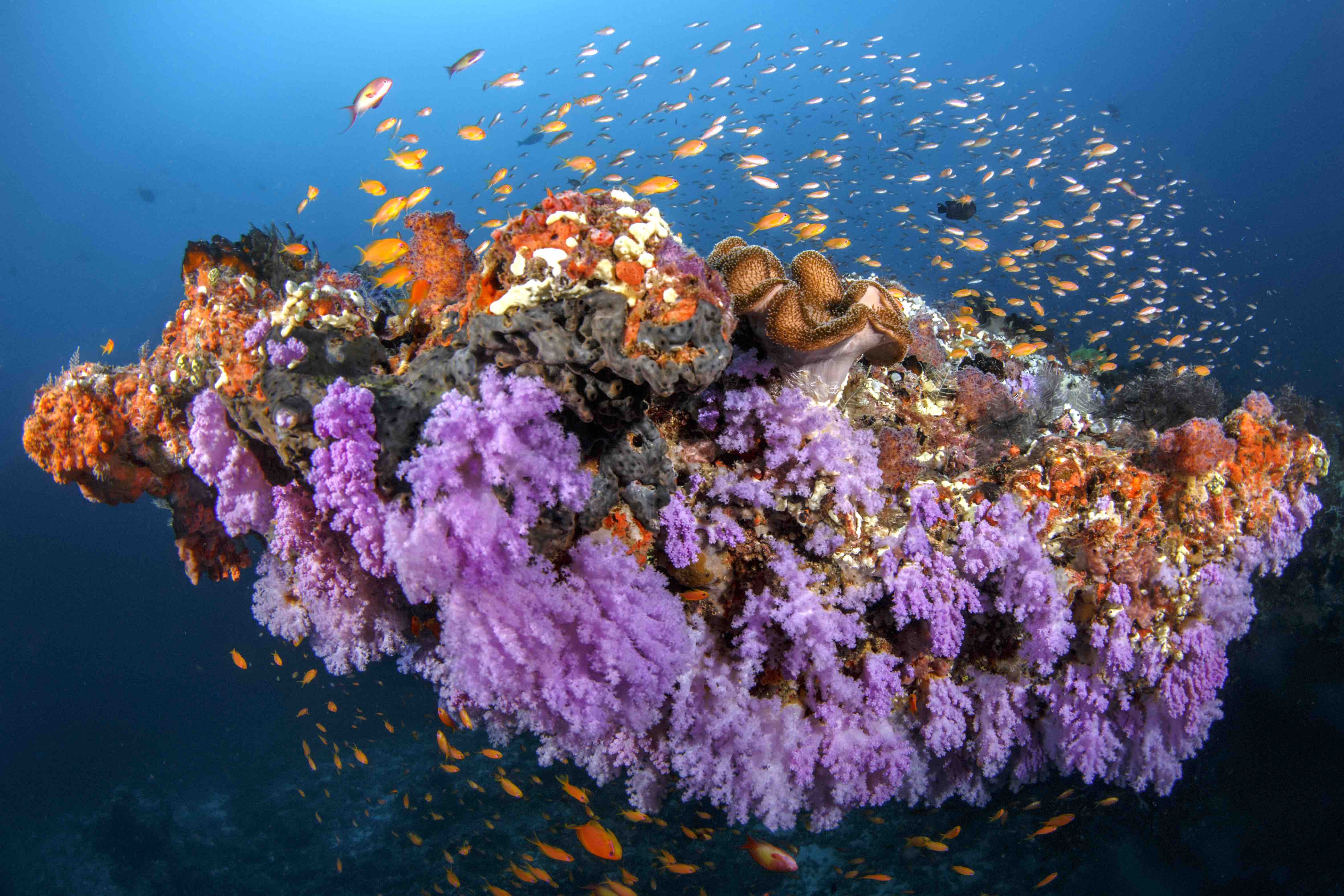
A purple soft coral bommie is crowded with anthias
The northern half of the country is characterised by pinnacles and internal reef structure (faru), covered in clouds of colourful reef dwellers, while in the south, pinnacles are less common, instead giving way to current-swept channels full of sharks, making it more suitable for more-advanced divers. Though there is, of course, macro life on every reef, it’s surprisingly sparse photographic fare, especially in light of the tremendous wide-angle opportunities that abound.
The Maldives is a great place to shoot behaviour, not just on the operatic scale of the feeding aggregation in Hanifaru, but because of the many schooling fish and cleaning stations, where colourful smaller species add an interesting element to any shot of a larger animal. Most dives are drifts, and many are relatively deep; spending a large part of a dive between 20 and 30 metres is common.
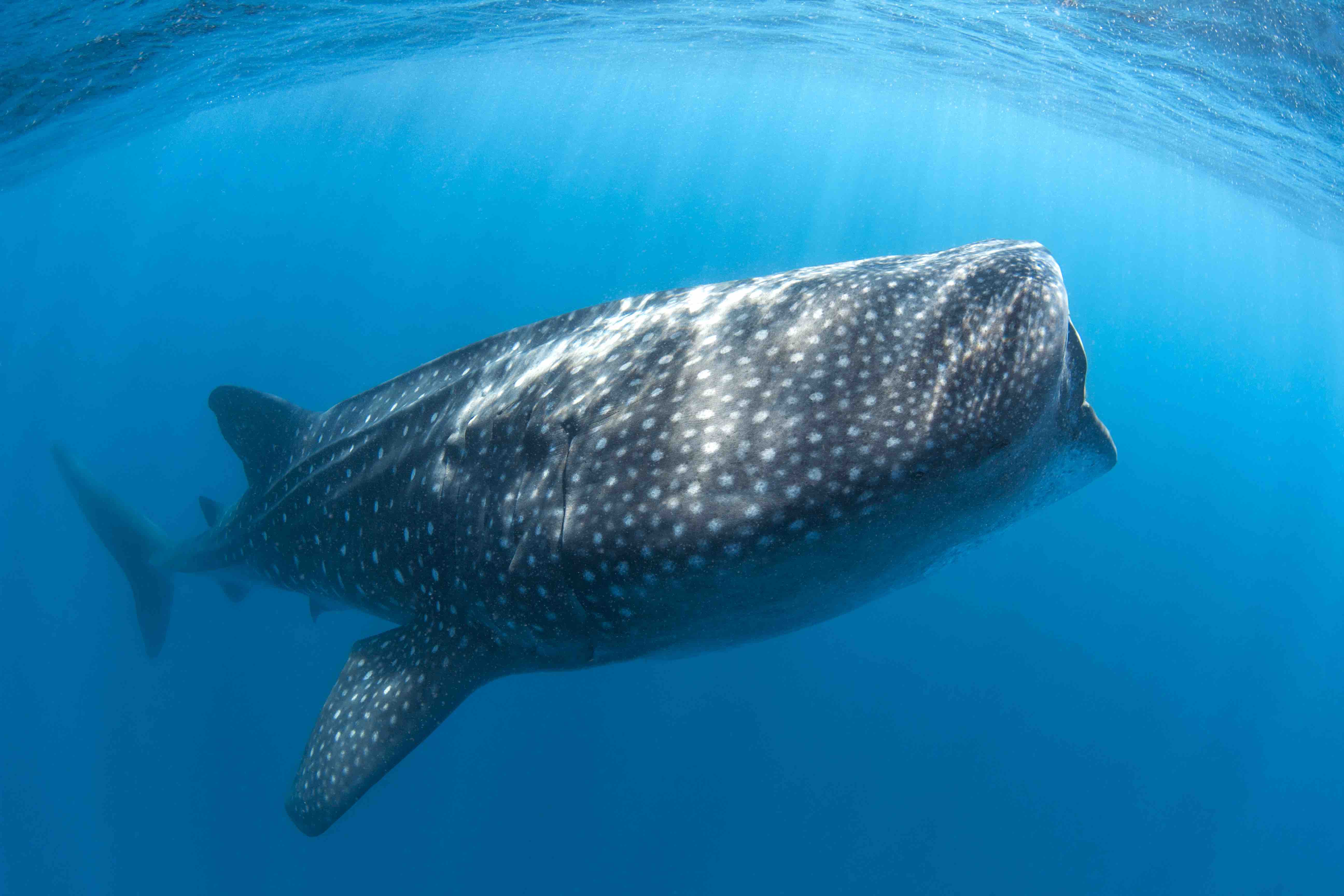
Whale sharks are found all year round in the Maldives
Macro Subjects:
The Maldivian reefs have an abundance of small reef dwellers. Crustaceans and eels, gobies, blennies, frogfish, pipefish and nudibranchs can be found on many dives. DSLR users, cross your fingers that “Mr. Big” doesn’t arrive on the scene while you’re set up for the small stuff!
Wide-Angle Subjects:
The Maldives provides epic opportunities for wide-angle shooters. Dozens of mantas in a column, somersaulting backward as they feast on krill, make for dramatic stills and jaw-dropping video. Walls of bannerfish, whale sharks, guitar sharks, spotted eagle rays, mobula rays, dolphin, turtles and even sailfish are common sights. Reefs covered with multihued soft corals and teeming with vividly coloured reef fish are also perfect subjects for a wide-angle lens.
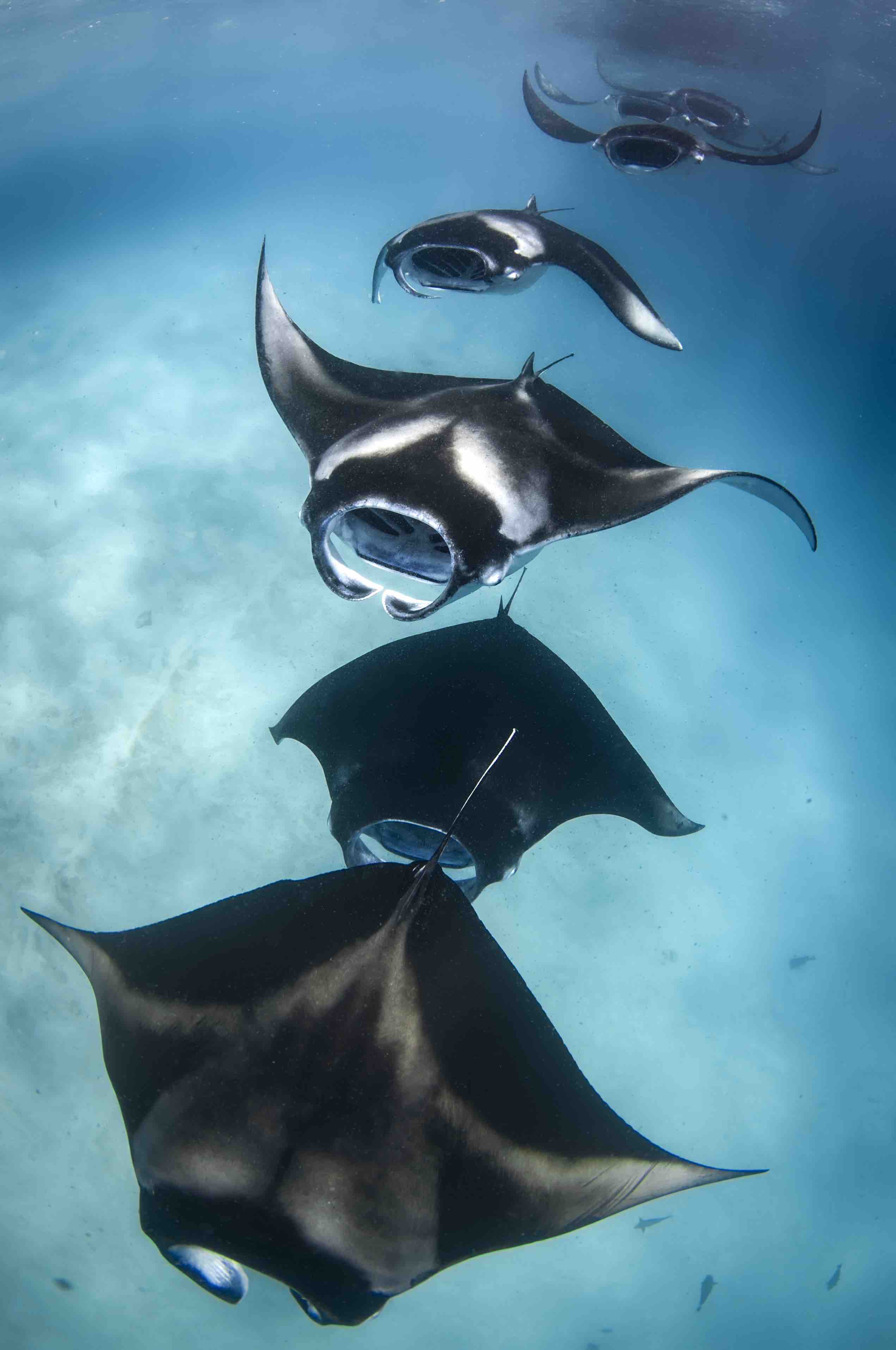
A classic manta feeding “train”
Tips and Techniques
Novice
MANTAS AT CLEANING STATIONS
Stay back from the cleaning station until the mantas feel comfortable, and always stay below a manta’s flight path. Don’t chase them – let the mantas come to you, and don’t forget to look behind you from time to time. Agree in advance to keep your whole group on one side of the cleaning station, and choose the side with the sun at your back for easier exposures. Upward angles and strobes work well in shallow cleaning stations, especially if the animals get close. Change your diving schedule if other boats are on a station. Too many people may spook the mantas, making good images difficult.
SOFT CORAL
Soft coral needs current to bloom, so even though it’s a stationary subject, decide on an approach strategy. Set your camera to f/8 and about 1/160s, ISO100–200. Pull the strobes back and up, behind the handles and above the midpoint of your housing. The strobes should be as far from the housing as the subject will be from the port. Swim a little way upstream and fire off a few shots as you drift back towards the subject. Review and adjust your settings, and repeat the process.
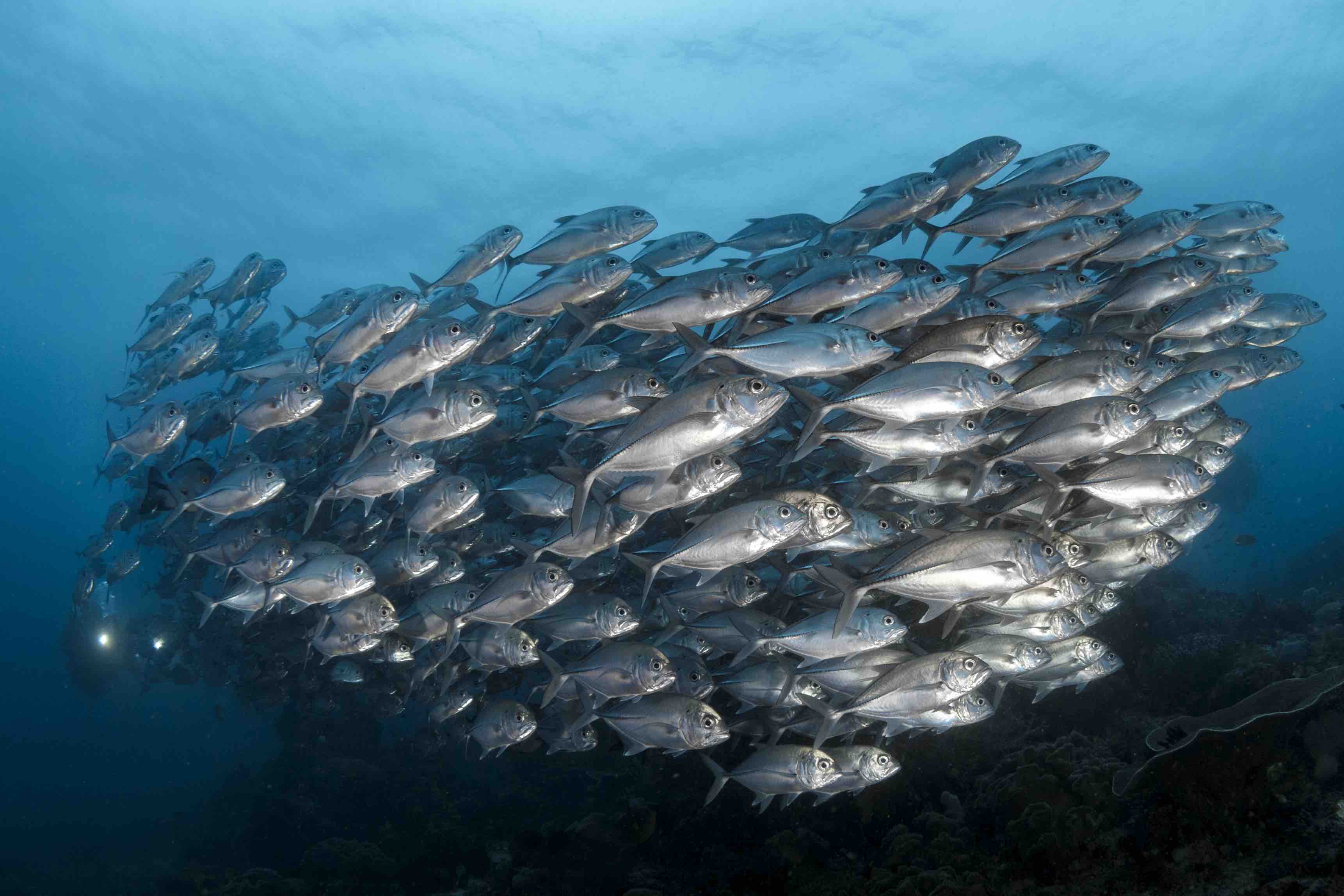
Photographers follow a large school of jacks
For the rest of this article (Asian Diver 2013 Issue 6 No 129) and other stories, check out our past issues here or download a digital copy here.
The 25th anniversary of the largest and longest running dive show, Asia Dive Expo (ADEX) is set to occur on the 11-14th April 2019. Centred on the theme – Plastic free Future, ADEX is more than just a dive show with its commitment to the environment. Among an exciting lineup of programs, attendees can look forward to a Future Forward Series of Panel Discussion on the Single-Use Plastic Conundrum in Asia, on 13th April.
So join us at the event, get inspired and for all you know, you might just liberate the inner diver in you! More details of the event here.

